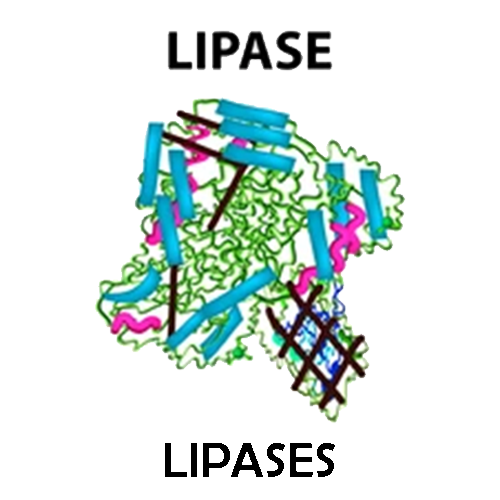
Lipase (from porcine pancreas)
脂肪酶
HK$360.00
CAS : 9001-62-1
Brand : Macklin
Type II , 30-90 units / mg
Lipase is an important enzyme that is covered in the IB biology curriculum, as it plays a crucial role in the digestion and metabolism of lipids (fats and oils).
The IB syllabus addresses the following aspects related to lipase:
Structure and function of lipase:
Lipase is an enzyme that catalyzes the hydrolysis of triglycerides (the main component of dietary fats) into fatty acids and glycerol.
The students need to understand the specific 3D structure of lipase and how it facilitates the catalytic breakdown of lipids.
Role of lipase in lipid digestion:
Lipase is primarily secreted by the pancreas and is also found in the small intestine.
It plays a key role in the initial stages of lipid digestion, breaking down large triglyceride molecules into smaller, more easily absorbable components.
Students need to comprehend the importance of lipase in the overall process of lipid digestion and absorption.
Experimental methods to measure lipase activity:
Students may perform experiments to measure the activity of lipase, such as using triglycerides or other lipid substrates and monitoring the rate of lipid hydrolysis.
These experiments help students understand the catalytic mechanism of lipase and the factors that can influence its activity.
Regulation of lipase secretion and activity:
The secretion and activity of lipase are regulated by various hormones and neural signals, such as the presence of fats in the small intestine and the secretion of cholecystokinin (CCK).
Students need to learn about the mechanisms that control lipase secretion and activity in the human body.
Clinical significance of lipase:
Abnormal levels or activity of lipase can be associated with various medical conditions, such as pancreatitis, pancreatic cancer, and cystic fibrosis.
Students may discuss the clinical implications and the potential therapeutic applications of lipase in the IB syllabus.
In summary, the IB biology syllabus covers the essential aspects of lipase, including its structure, function, role in lipid digestion, experimental methods, regulation, and clinical significance.

